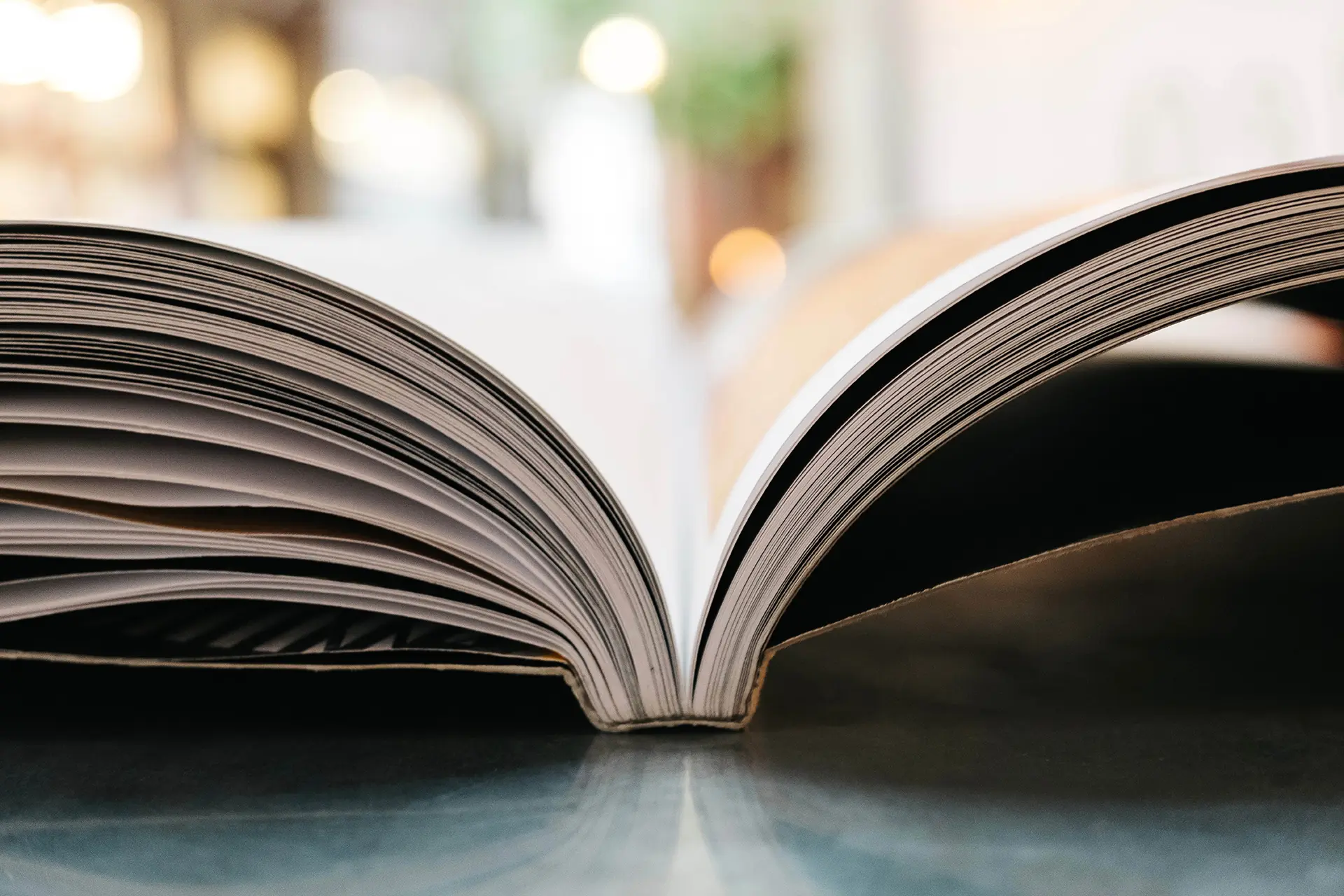Beautiful books – thread sewn binding
For a high-end, premium look to your print product, thread-sewn book binding is the way to go. This durable binding method uses thread to sew the inner sheets together. Unbleached linen thread is most frequently used for sewing sections. You can actually use pretty much anything you like, but we recommend linen for its enduring strength. Thread sewn binding is one of the oldest forms of book binding.
It is a complex method, which makes it a more expensive option than some other binding methods. But with thread sewn binding, the results are more than worth it. Margins and page size may be affected, and this can be addressed through the print design process.
Individual sheets are first folded, then gathered, and sewn together, to form a section. Each section is glued into place on the spine – the narrow strip that joins the pages to the cover of the book. It is then trimmed on three sides.
Thread sewing guarantees an almost infinite number of options for your project. Inside pages are available across a wide spectrum of paper weights. Thread sewn binding uses individual sections: each section can be unique to its neighbour.
With thread-sewn binding, each block is glued to the cover, also known as a book board. Choose from a broad palette of colours, in just about any fabric or material to create the perfect cover story.
Add design features with contrast endband or headband (the bands located at the top (head) and end (bottom) of the spine). These bands were traditionally added to the ends of book spines to strengthen them, and to align signatures. Headbands are especially important, as people often remove books from shelves by pulling on the top of the book. In fact, that’s one of the reasons they were first added.
Functional, or ornamental, endbands help control the shape and movement of the book spine, and inevitably attract the eye. They are a popular decorative choice in modern bookbinding.
Illustrated and art books; books of faith; prospectuses and photographic publications. End bands say a lot about the provenance and importance of the book they protect.
Add stylish details to your product with the use of embossing, or debossing. Embossing is when an image or words are raised above the surface of the page: debossing is when they are pressed into the surface of the page, to create a concave impression. Specialist tactile printing methods, like die cutting and engraving, are also possible.
A thread sewn bound book is the jewel in the crown of skilled, architectural bookbinding.
With Galloways, brilliant bookbinding comes as standard. We’ve been creating beautiful books and exceptional print for five generations. If you want a book that deserves to be judged by its cover, contact our friendly team today, on 01625 870000.
